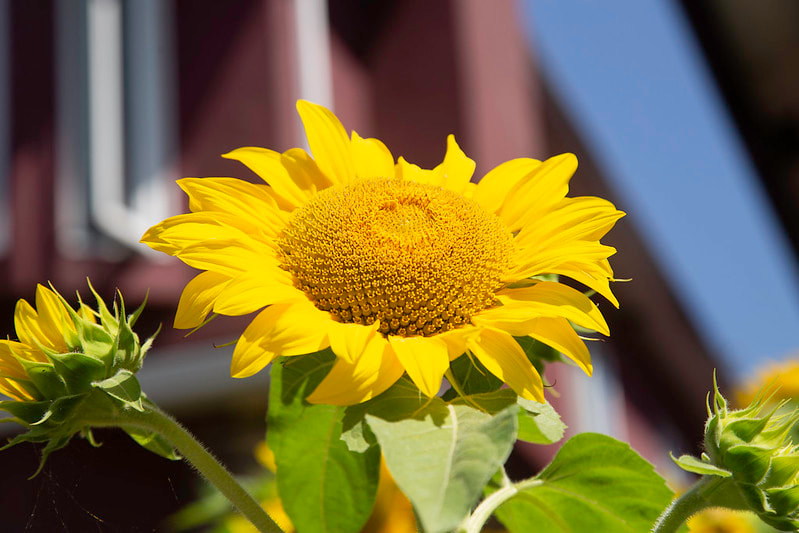|
The sunflower has a long history, with its first use being cultivated by tribes in North America around 4500 years ago.
Sunflowers were first discovered by European explorers in 1510. However, it wasn't until 200 years later that Europeans began to acknowledge the food and oil-bearing potential of sunflower seeds. It was In Russia, the crop's potential for oil production was established. Beginning in the 1800's, a steady trickle of Eastern Europeans began to emigrate to North America. Among them were Russian settlers who brought with themselves sunflowers and used it as animal feed primarily due its high protein content. Thus, the sunflower had returned to its origins and has flourished ever since. The blossom of the sunflower is called a head and can actually contain up to 2,000 individual flowers! The petals we see on the outside are ray florets and disc florets develop in centers which contain seeds. The seeds of the sunflower are rich in nutrients and can be used as a snack for people or birds. They grow inside the center part of the flower. The sunflower is a diverse and fascinating flower with many different characteristics. The tallest species of the Helianthus genus can only grow up to 9 feet, but there are also dwarf varieties that reach 8 inches at maturity. Sunflowers vary in color as well; their petals range from yellow through orange, purple or red depending on genetics and environmental factors such as sunlight exposure. Sunflowers don't just follow the sun, they track it. The French word for "sunflower" is tournesol which means turns with the sun. Young sunflowers will face east and follow the Sun during day but as soon as night comes their heads turn west to appreciate a beautiful sunset! As a flower grows its head becomes heavier. As they mature, they point themselves eastward all throughout the day. Sunflowers are great for summertime bouquets and arrangements. Their cheery presence can last a long time in an arrangement, if they're cut properly and conditioned or hydrated. Cut at a 45-degree angle and allow to condition in hot or warm water. Allow sunflower stems to take up the water this way for at least 24 hours if possible. Try to keep them out of direct sunlight at this point. You can keep them in bright light, but not direct light. And avoid drafts or high air flow areas. This will dry the flowers out. We recommend refreshing the water daily and using hot or warm water is best. You can add flower or plant food at that time if desired. You should be able to enjoy your sunflowers indoors for 10 days or more, following these suggestions above. |
Archives |
HoursM-F : 10AM-5PM
SAT: 12pm-4PM SUN: CLOSED |
Telephone(780) 429 1637
|
|

 RSS Feed
RSS Feed
